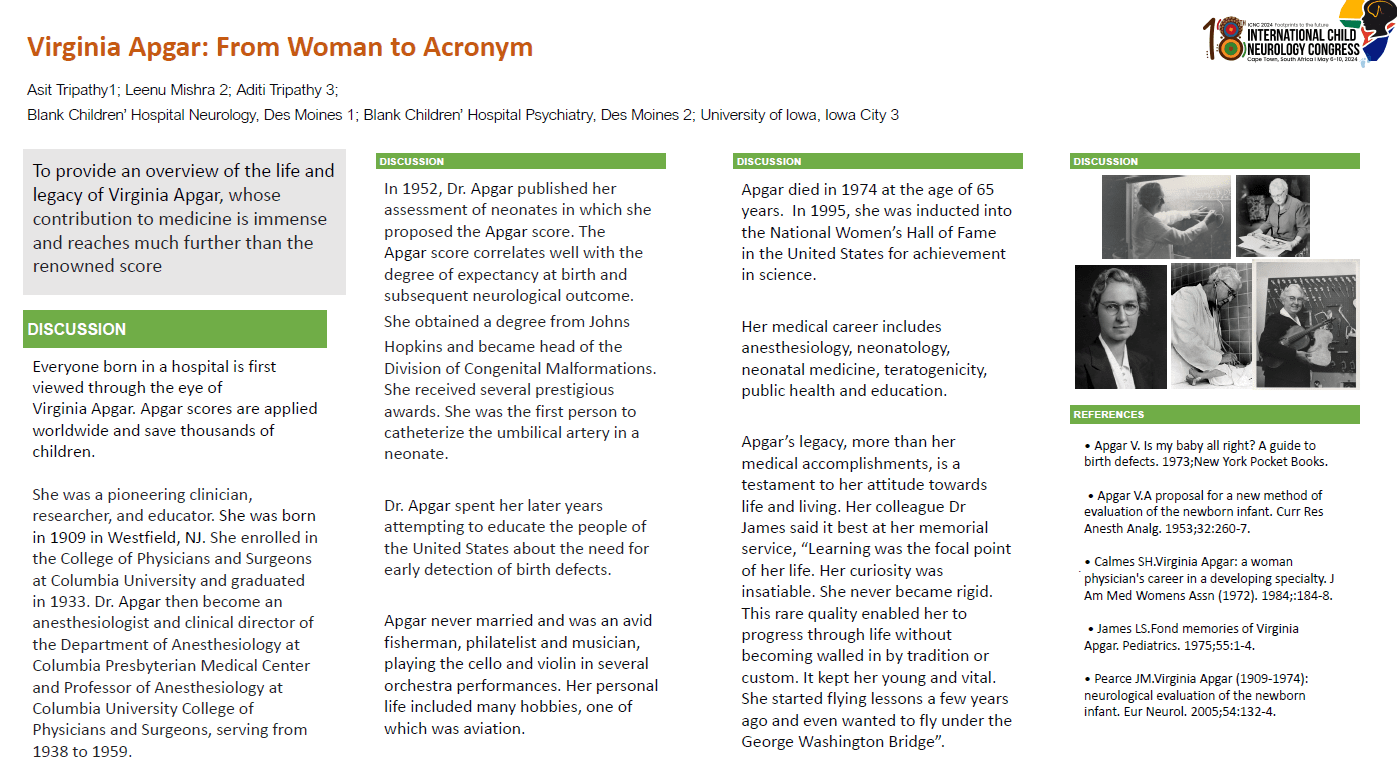Virginia Apgar: From Woman To Acronym
Aim: To provide an overview of the life and legacy of Virginia Apgar whose contribution to medicine is immense and reaches much further than the renowned score.
Results: Everybody born in a hospital is first viewed through the eye of Virginia Apgar. Apgar scores are applied worldwide and save thousands of children. She was a pioneering clinician, researcher, and educator. She was born in 1909 in Westfield, NJ. She enrolled in the college of physicians and surgeons at Columbia University and graduated in 1933. Dr. Apgar then become an anesthesiologist and clinical director of the department of anesthesiology at Columbia Presbyterian Medical Center and Professor of Anesthesiology at Columbia University College of Physicians and Surgeons, serving from 1938 to 1959.
In 1952, Dr Apgar published her assessment of neonate in which she proposed the Apgar score. In addition, the Apgar score correlates well with the degree of expectancy at birth and subsequent neurological outcome.
She obtained a degree from John Hopkins and became head of the Division of Congenital Malformations. She received several prestigious awards. She was the first person to catheterize the umbilical artery in a neonate. Dr. Apgar spent her later years attempting to educate the people of the United States about the need for early detection of birth defects.
Dr. Apgar died in 1974 at the age of 65 years. Her medical career includes anesthesiology, neonatology, neonatal medicine, teratogenic, public health and education. Her personal life included many hobbies, one of which was aviation and playing violin.
Asit Tripathy
Blank Children's Hospital
United States
Leenu Mishra
Blank Children's Hospital
United States
Aditi Tripathy
University of Iowa
United States

Asit Tripathy
Blank Children's Hospital
United States